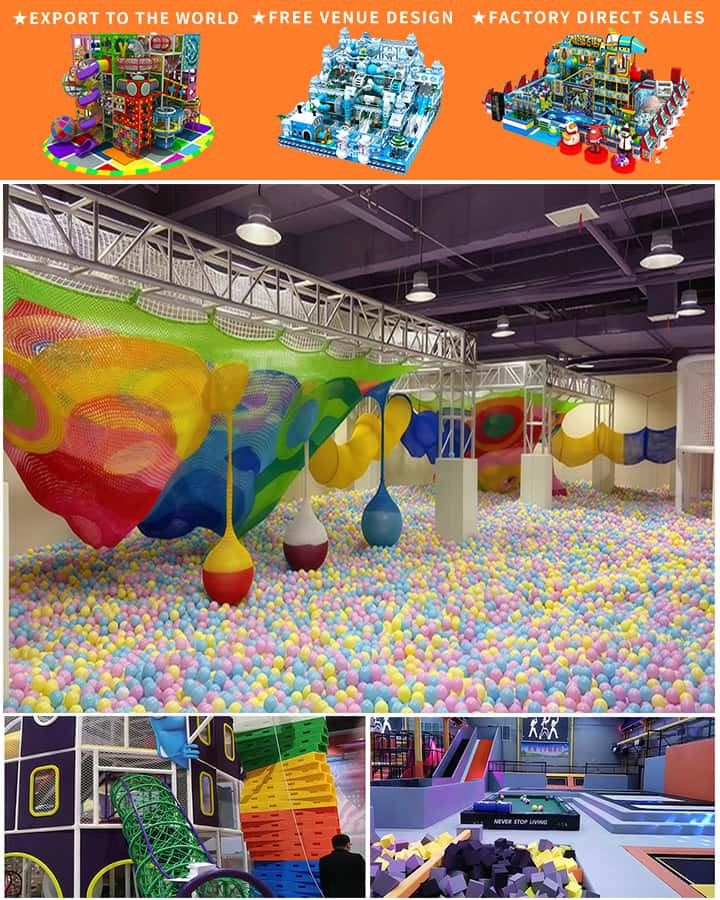In the age of digital entertainment and outdoor restrictions, finding an engaging and safe environment for children can be challenging. Thankfully, indoor playgrounds are a fantastic solution. These spaces provide a controlled, safe, and stimulating environment where kids can play, learn, and grow. This comprehensive guide will help you understand what an indoor playground offers and how it can benefit your children.
What is an Indoor Playground?
An indoor playground is a facility designed specifically for children’s recreation, typically featuring climbing structures, slides, ball pits, and interactive games. Unlike outdoor playgrounds, these facilities are enclosed and offer various activities that cater to different age groups and interests. Whether you’re looking for a place to burn off excess energy on a rainy day or searching for a fun venue for a birthday party, indoor playgrounds are versatile and accommodating.
Benefits of Indoor Playgrounds
Safe Environment
One of the primary advantages of indoor playgrounds is safety. These environments are monitored by staff and usually feature soft flooring to minimize the risk of injury during play. Additionally, many indoor playgrounds have strict cleanliness protocols, ensuring a hygienic space for kids to enjoy.

Physical Activity
Regular physical activity is crucial for children’s development. Indoor playgrounds encourage active play through climbing walls, trampolines, and obstacle courses. These activities promote physical fitness, coordination, and balance, contributing to the overall well-being of kids.
Social Interaction
Playgrounds are social hubs where children can interact with their peers, develop friendships, and enhance their social skills. Shared experiences in a group setting teach children cooperation, sharing, and problem-solving. For shy or socially anxious kids, indoor playgrounds can provide a less intimidating atmosphere to build confidence.
Mental Stimulation
Beyond physical benefits, indoor playgrounds stimulate cognitive growth through imaginative play and interactive exhibits. Many play areas incorporate educational elements like puzzles, building blocks, and themed play areas that encourage creativity and learning.
Finding the Right Indoor Playground
Safety Standards
When selecting an indoor playground, prioritize safety. Look for facilities that comply with local safety regulations and have visible hygiene practices. Staff should be friendly, attentive, and trained to handle emergencies.
Age-Appropriate Equipment
Ensure the playground has equipment suitable for your child’s age group. Some facilities are designed for toddlers, while others cater to older children and even teenagers. Reading reviews or visiting the facility beforehand can give you insight into the range of activities offered.
Location and Convenience
Proximity matters, especially if you plan to visit frequently. Choose a playground that is conveniently located near your home or within a reasonable travel distance. Check for amenities such as parking, changing facilities, and food options to make your visit more comfortable.
Membership and Pricing
Many indoor playgrounds offer flexible pricing options, including pay-as-you-go rates, membership packages, and discounts for siblings. Consider your budget and how often you plan to visit when evaluating these options. Some places also offer special events or unlimited play passes that can provide additional value.
Conclusion
Indoor playgrounds are more than just a place for children to expend energy; they are multifunctional venues that support physical health, social development, and mental stimulation. By choosing the right indoor playground, you can ensure your child enjoys a safe and enriching environment, regardless of the weather or time of year. So next time you need a break from the usual routine or want to treat your child to some fun, consider visiting an indoor playground—it might just become your new favorite family outing!




